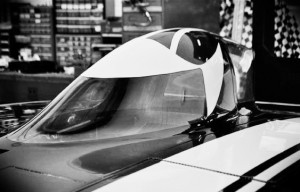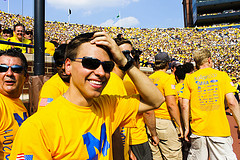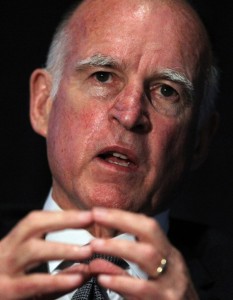 Since the 1980s, engineers have been building, and racing solar cars. With software from Dassault Systèmes SolidWorks Corp., the
Since the 1980s, engineers have been building, and racing solar cars. With software from Dassault Systèmes SolidWorks Corp., the  University of Michigan (U-M) Solar Car Team has designed a car to compete in the World Solar Challenge in Australia this month. A six-time winner of the American National Championships, the U-M team is competing in the World Solar Challenge—and the car design is lighter and more aerodynamic than ever before. Since 2006 U-M has used SolidWorks software to become the number 1 ranked collegiate solar car team in North America. Next week they will compete on the world stage driving 1800 miles across Australia thanks to the work of over 100 students in various disciplines at U-M. Quantum, the single-seat race vehicle, will travel as far as it can until 5pm each afternoon powered by the sun and 5kW hours of stored energy (the same amount of energy that it takes to power a hair-dryer) or on the recovered kinetic energy from the vehicle.
University of Michigan (U-M) Solar Car Team has designed a car to compete in the World Solar Challenge in Australia this month. A six-time winner of the American National Championships, the U-M team is competing in the World Solar Challenge—and the car design is lighter and more aerodynamic than ever before. Since 2006 U-M has used SolidWorks software to become the number 1 ranked collegiate solar car team in North America. Next week they will compete on the world stage driving 1800 miles across Australia thanks to the work of over 100 students in various disciplines at U-M. Quantum, the single-seat race vehicle, will travel as far as it can until 5pm each afternoon powered by the sun and 5kW hours of stored energy (the same amount of energy that it takes to power a hair-dryer) or on the recovered kinetic energy from the vehicle.
“Only one U.S. team has ever won the World Solar Challenge,” said Chris Hilger, Business Director of U-M Solar. “This year, we believe we have a winning car design due to the improved aerodynamic shell and significantly lighter weight. SolidWorks helped us model each part to be as small, light, and effective as possible, and this contributes significantly to the car’s speed and maneuverability.”When designing the solar car, the U-M team found systems integration to be the most difficult challenge. Mechanical parts need to be small and light, in order to fit into as small an automotive shell as possible. The U-M team relied upon SolidWorks 3D CAD software to model all of the car components, and determined the amount of space needed for each component. The result is a car that is 30 percent more aerodynamic and 200 pounds lighter than the previous version.
“The U-M Solar Car Team has been able to achieve groundbreaking results with a lighter and faster car,” said Marie Planchard, director of education at Dassault Systèmes SolidWorks. “This extraordinary team is poised to take the lead at the World Solar Challenge, and we’re proud to have contributed to a stellar—and hopefully winning—design.”













